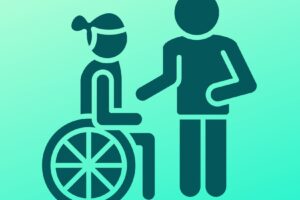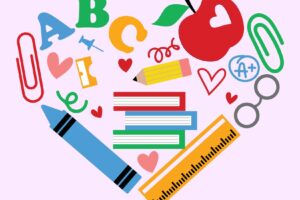Reading to children is so important on so many levels, and shared reading takes reading to a whole new level. Even with children with the severest of disabilities. ALL benefit greatly from shared reading experiences. From the age of infancy, shared reading bonds parent to child, building a sense of security and love. It’s within those intimate moments that the infant sees the parent’s mouth, lips, and tongue at work. It’s within those intimate moments that the child hears the sounds and the words spoken. In the world of Education, it has already been documented by researchers that shared reading experiences improve vocabulary, focus, world knowledge, listening skills, listening comprehension, sitting skills, self-esteem, and the awareness of the conventions of print, just to name a few.
Shared reading is more than the parent reading to the child, or the teacher reading to the students. Shared reading is an experience that involves sharing a story and reading together and encourages early reading enjoyment. Shared reading can incorporate:
- Echo Reading– Child/Student echo’s the words after the teacher.
- Choral Reading – Child/Student reading at the
same time as the teacher. - Fill in the Gap Reading – Parent/Teacher reads
the majority of the story and then pauses for child/student to fill in and say
rhyming words or other predictable words in the story.
But, in the world of Special Education, you might ask, what does it do for children with disabilities? You would be surprised at how much it does the same!
- Bonding – In infancy, shared reading experiences builds a bond of security and love between parent and child. This is critical early on, especially when a child is
born with a disability. There is often a disconnect between the grieving parent
who is overwhelmed and a baby who already faces struggles not typical of babies
born without disabilities. Shared reading bridges that gap. - Intimacy – As with typical children, children with disabilities are watching and hearing as well: the parent’s mouth, lips, and tongue at work, the sounds and the words spoken. All of this is the foundation for language.
- Sitting Skills – Early on, shared reading develops sitting skills. They learn to
sit, be still and not fidget. That’s where learning begins. - Focus – They learn to focus and pay attention.
- Listening Skills & Listening Comprehension –They learn to listen. They learn about emotions. Through stories, our students learn about happy, sad, mad, hurt, and so much more.
- Self-Esteem – Escalates through the roof.
- And yes, vocabulary does improve with our population of students!
- And Finally, yes, our students do become aware of print!
Now, I can hear some minds already thinking “yeah, right… we can’t do that with our population of students, they don’t talk, they don’t have words, they don’t…!” And my response is “yes you can.” Your child/student may not be able to echo a word, but he/she can echo a sound, even if the sound is nothing close to the word spoken. The idea here is to get a response. Your child/student may not be able to read at the same time with you, but they can vocalize with you as you read the story. Once again, the idea is to get a response to something that is asked of them. And no, they may not be able to fill in the gap with a word, but they can sure do it with a sound, a musical instrument, a drum, a shaker toy, or a voice output device. The list of ideas can be endless. Just let your imagination run with it. The overall idea with shared reading is engagement between parent, child, student, and teacher.
Shared reading is a teaching and learning moment! Not only for the child/student involved, but the parent/teacher as well. Shared reading is also a communication moment! Looking to increase verbal communication skills? Read, read, read!



